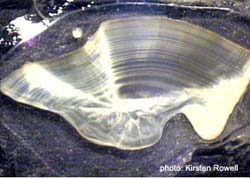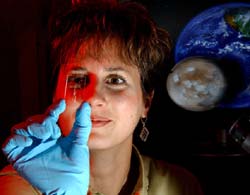New reserach by Columbia University
For years, researchers have examined climate records indicating that millennial-scale climate cycles have linked the high latitudes of the Northern hemisphere and the subtropics of the North Pacific Ocean. What forces this linkage, however, has been a topic of considerable debate. Did the connection originate in the North Pacific with the sinking of oxygen-rich waters into the interior of the ocean during cool climate intervals, or did it originate

NASA and University of Maryland scientists have found the African monsoon consists of two distinct seasons The first season is in the late spring and early summer. The rain is concentrated on the West African Coast near the Gulf of Guinea, five degrees north of the equator. This season appears strongly influenced by sea surface temperatures off the coast of West Africa. The second season arrives later in summer in July at around 10 degrees north of the equator. Atmospheric wa

During their tender youth, both the endangered fish species totoaba and the commercially important gulf corvina require the brackish water habitat provided by the shrinking Colorado River estuary, report researchers.
Although overfishing has been implicated in the decline of both species, commercial harvesting isn’t the only reason for the two species’ decline, the finding suggests. Since 1960, diversion of Colorado River water for human uses has greatly reduced the amount of fresh water t
Situated between the continental shelf of the eastern United States and the north wall of the Gulf Stream flowing eastward from Cape Hatteras, the Slope Sea is a transition region between the productively rich coastal waters and the productively static open ocean.
In the current SeaWiFS special issue of Deep Sea Research II, University of Rhode Island oceanographers Stephanie E. Schollaert, Thomas Rossby, and James Yoder describe their four-year, NASA-funded study of the Slope Sea along the
If a time machine could take us back 4.6 billion years to the Earth’s birth, we’d see our sun shining 20 to 25 percent less brightly than today. Without an earthly greenhouse to trap the sun’s energy and warm the atmosphere, our world would be a spinning ball of ice. Life may never have evolved.
But life did evolve, so greenhouse gases must have been around to warm the Earth. Evidence from the geologic record indicates an abundance of the greenhouse gas carbon dioxide. Methan

With a microscope and computer monitor, researchers at NASA’s Marshall Space Flight Center in Huntsville, Ala., watch fluorescent bacteria flow through tiny, fluid highways on a dime-sized lab on a chip.
Lab-on-a-chip technology allows chemical and biological processes — previously conducted on large pieces of laboratory equipment — to be performed on a small glass plate with fluid channels, known to scientists as microfluidic capillaries.
“We are studying how lab-on-a-chip